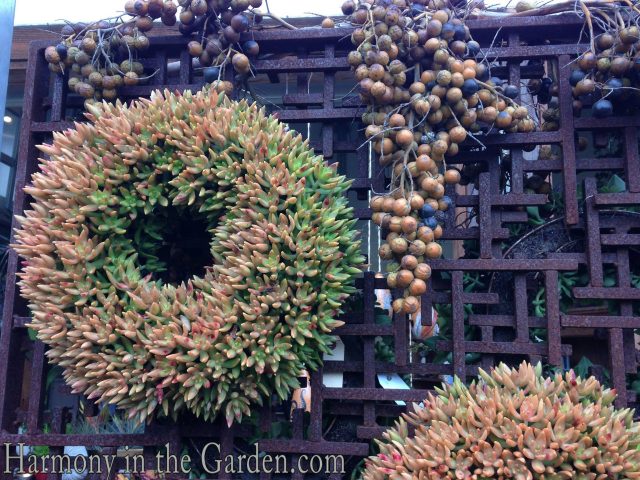
Happy New Year, Everyone!
Being the first day of a new year (of a new decade, no less!), I feel it’s the perfect time to acknowledge the importance of time in the garden.
As most of you know, gardens need a solid 2 to 3 years before they begin to fill in and come into their own.
And because of this, it can often be challenging for designers to return years later and find the garden looks as good in reality as it did in our minds.
The fact is, a lot can happen over the course of a few years!
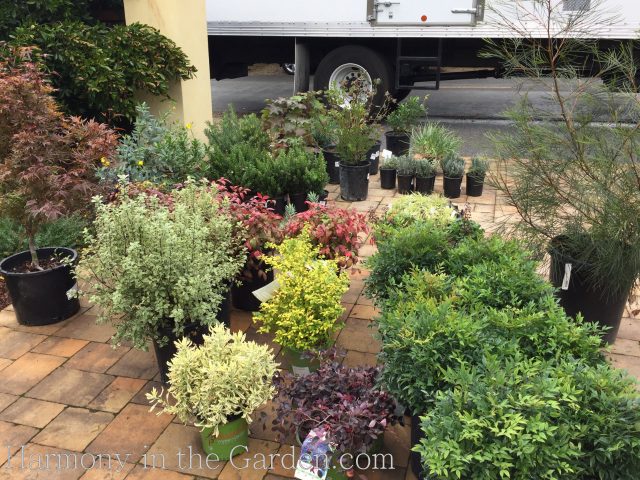
For example, they might hire inexperienced gardeners who butcher the design, or a drought hits, or a storm knocks down trees exposing shady plants to full sun, or (gasp!) the client might even move away! You name it, it happens.
But once in awhile I return for a follow-up visit and the garden looks fantastic. And when that happens, hoo-boy it’s a good day!
I’ve been really fortunate to see many of my designs blossom in the capable hands of my clients (click here , here, and here). And today’s example is no exception.
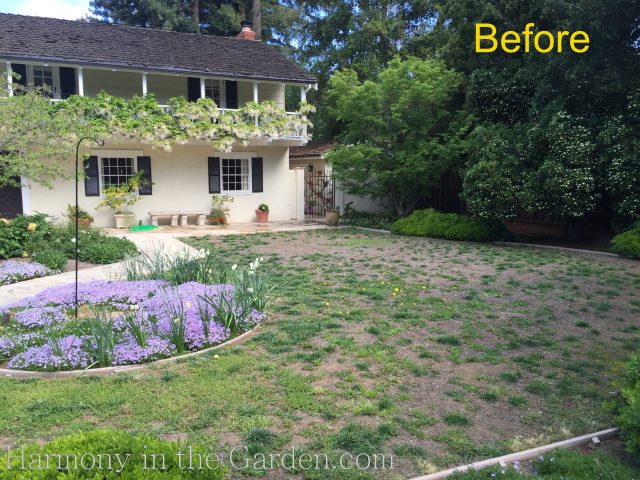 This project was a very special one for several reasons. For one, the clients (both fabulous people) are avid gardeners, which is always an extra treat for me as it’s an entirely different designing experience working hand in hand with fellow plant-lovers.
This project was a very special one for several reasons. For one, the clients (both fabulous people) are avid gardeners, which is always an extra treat for me as it’s an entirely different designing experience working hand in hand with fellow plant-lovers.
The home itself is listed on the Los Altos historic home register and is another reason this project was so unique. Discreetly tucked away along a residential street, it’s truly a hidden gem, waiting to be discovered.
In the very front of the property is the guest house (formerly the main home) with an outdoor space that was dominated by a sweeping, lackluster lawn.
They wanted their guests to have their own inspiring and private garden to enjoy, instead of a boring (and much too thirsty) lawn. So it was an easy decision to remove the offending lawn.
To blend with the Old California-style home, we traded the lawn for a pebble courtyard with an antique urn as its centerpiece.
Surrounding this area are oversized garden beds that gently sweep around and hug the space.
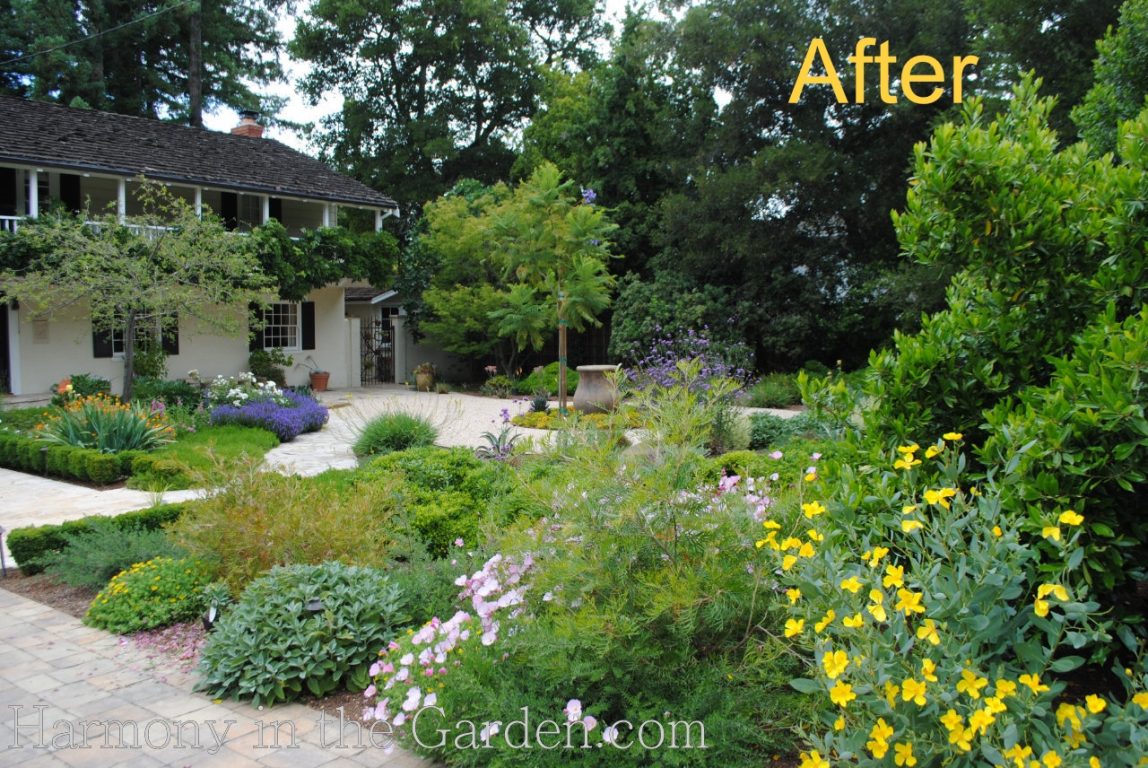
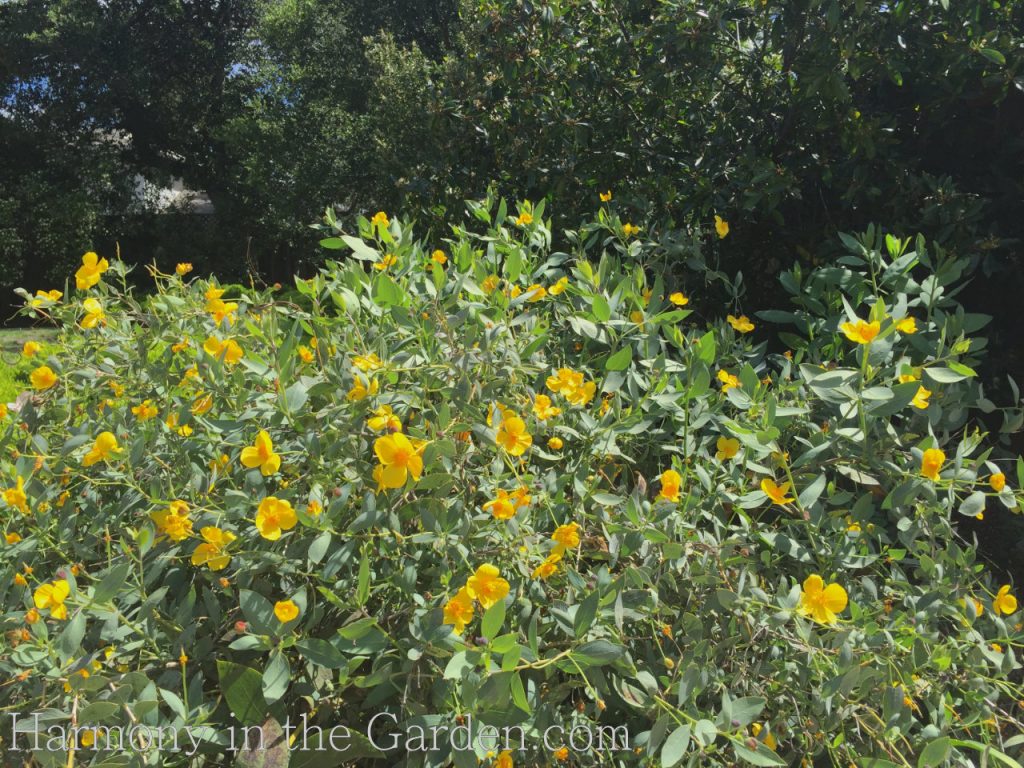

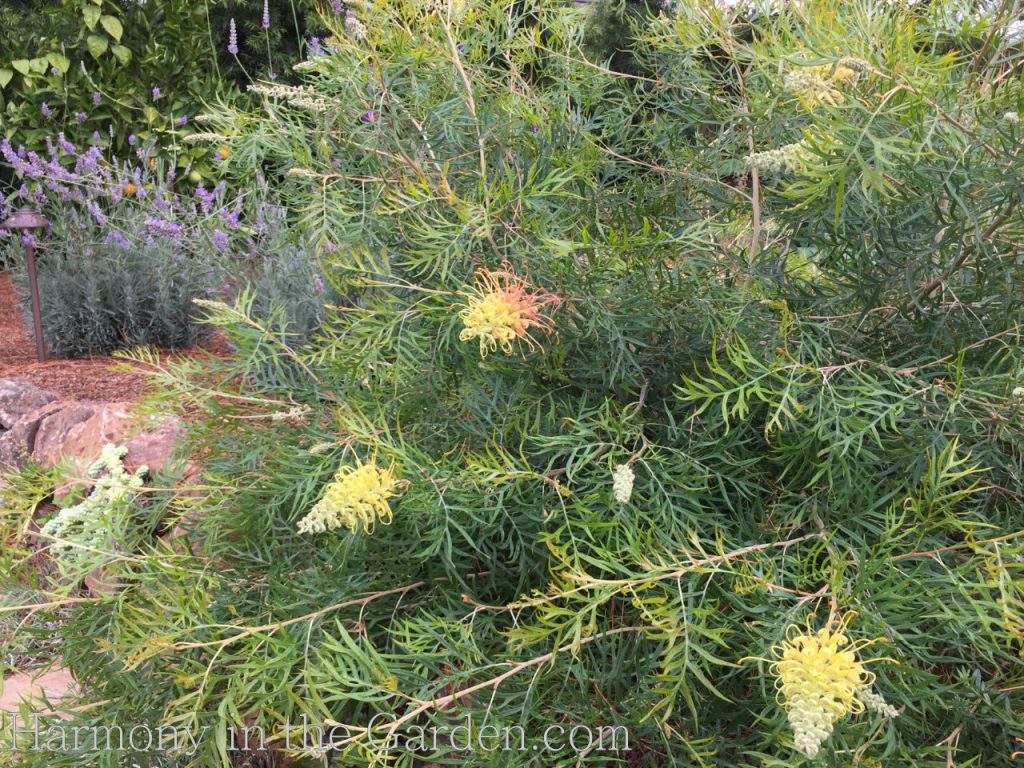
Planted in the beds are a mix of succulents, my favorite low-water plants: dendromecon rigida (Bush Poppy – first photo), grevillea ‘Peaches & Cream’ (third photo), westringias, and leucadendrons.
More traditional plants such as Japanese maples, roses, and wisteria happily mingle with the low-water varieties and the combination provides a year-round explosion of color.
Passing through the main gate leads to the homeowners’ primary residence with a private walled garden.
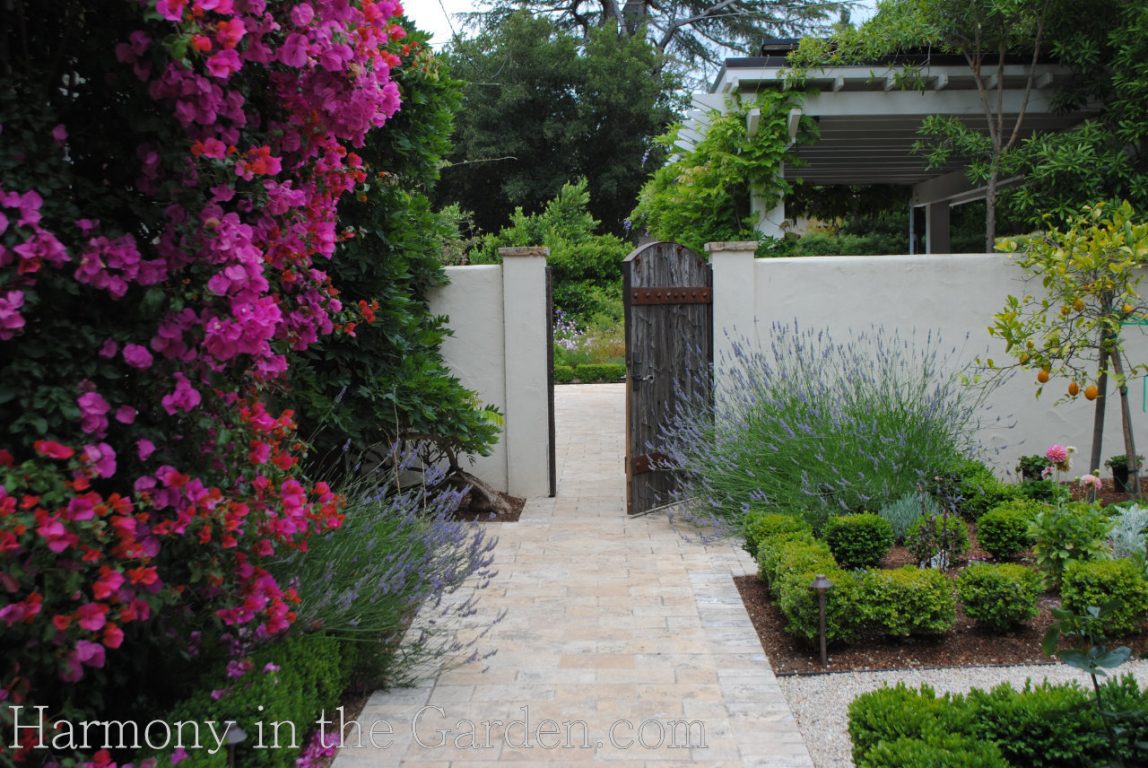
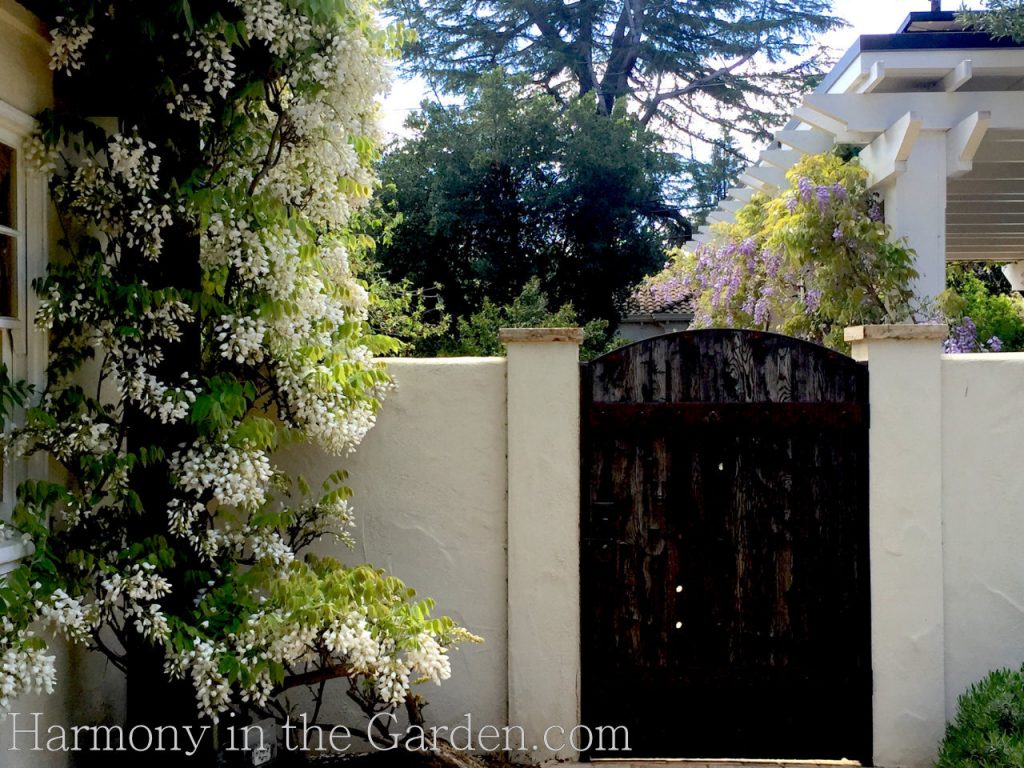
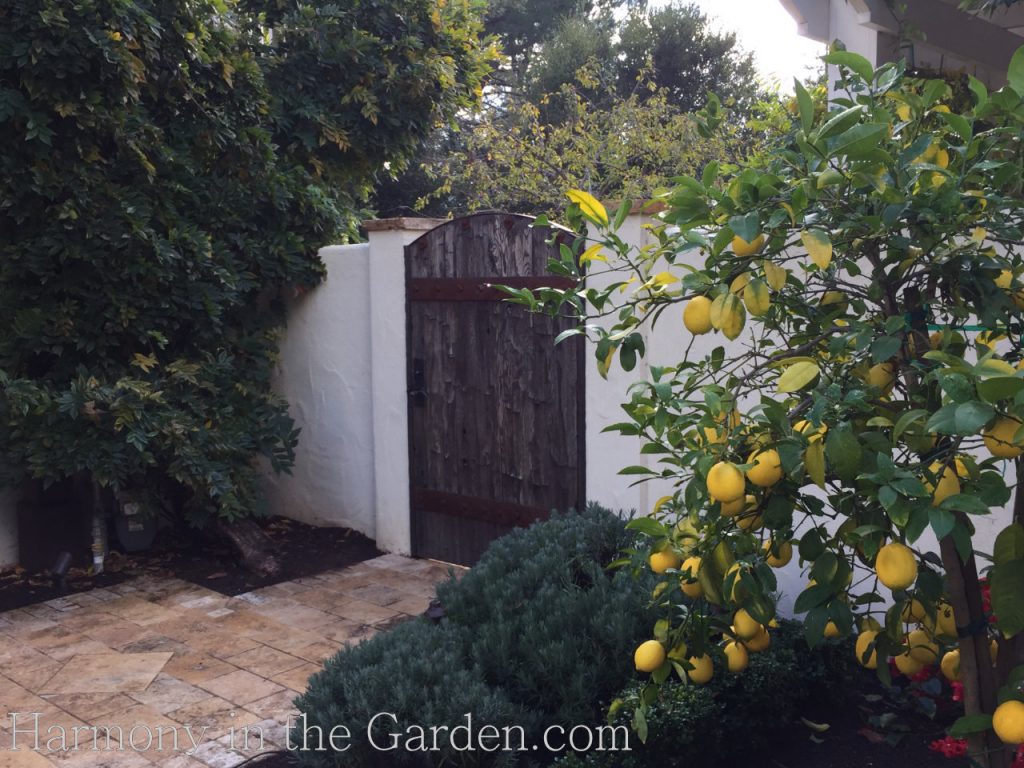
Depending on the time of the year, the gate is either flanked with a stunning purple bougainvillea, or a crisp, white wisteria.
On the other side of the gate is an old Meyer lemon tree surrounded by French lavender and a mix of perennials.
This is a perfect example of staggering bloom times for many weeks of beauty, as well as creating a grand entrance into the garden.
But now there was another lawn we needed to address in the back garden. One that was taking up precious garden space. Again, the solution was to drastically reduce the size of the lawn.
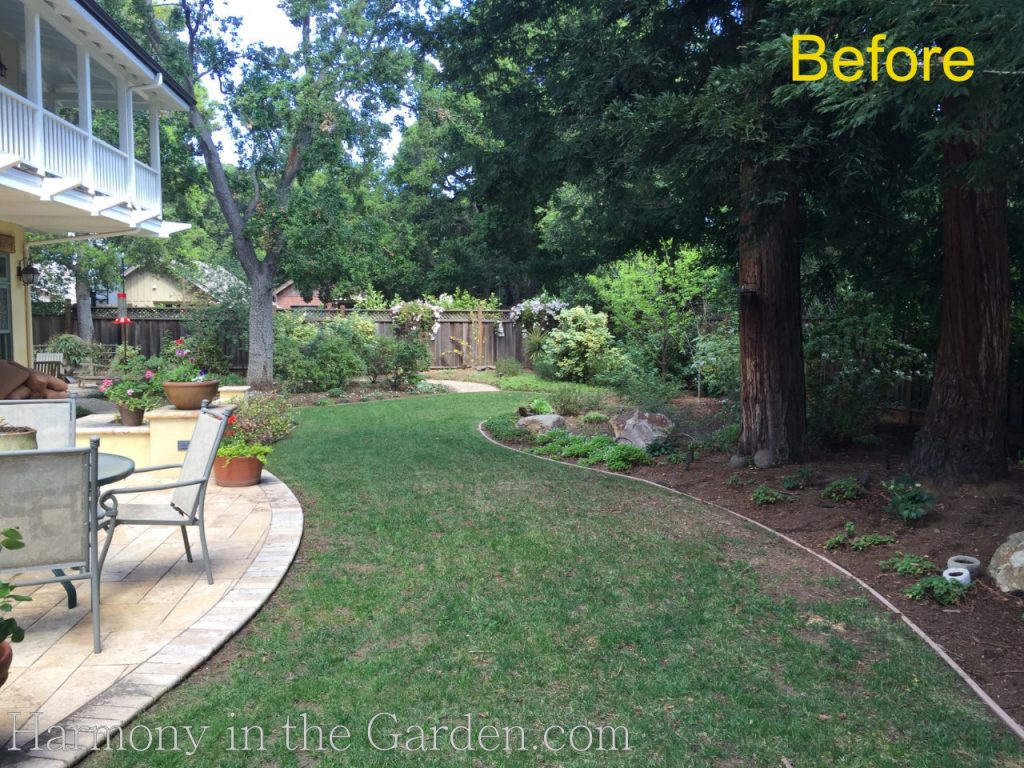
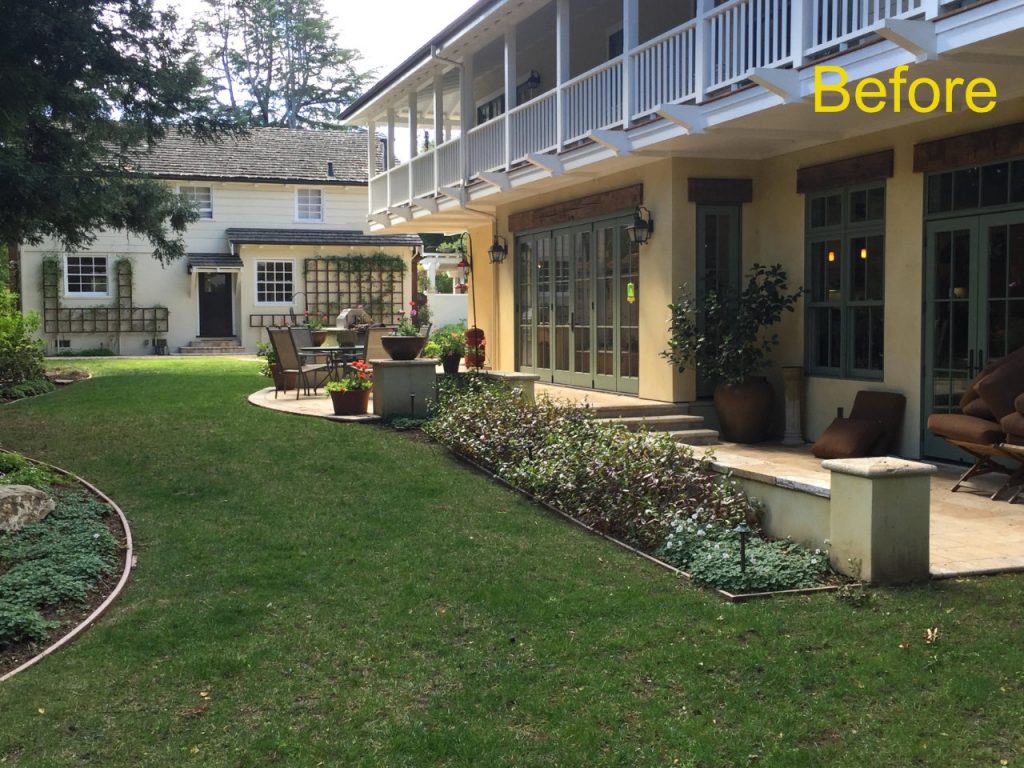
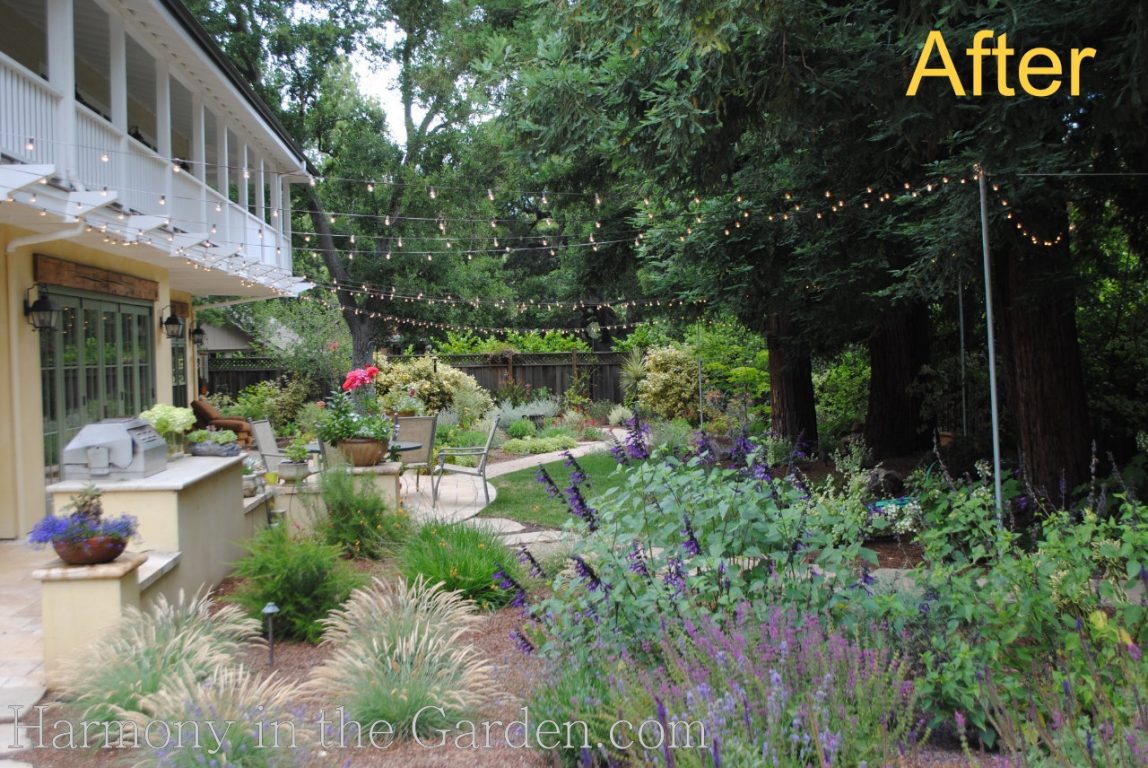
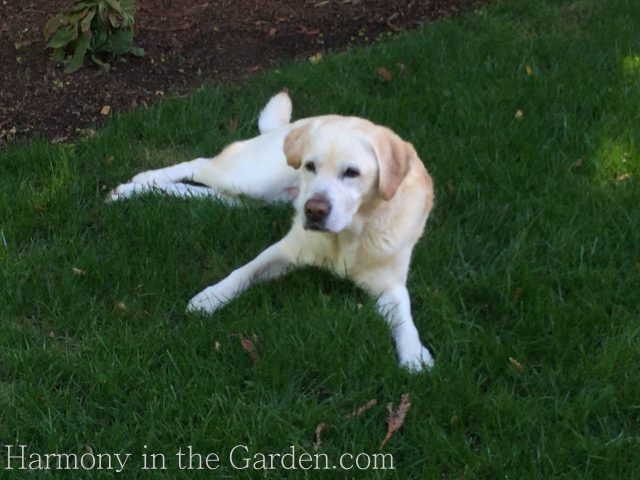 We didn’t remove the entire lawn, however, deciding to leave a small section for Hazel (the family pup) who loves nothing more than to roll around on it.
We didn’t remove the entire lawn, however, deciding to leave a small section for Hazel (the family pup) who loves nothing more than to roll around on it.
We surrounded all sides of the small patch of lawn with robust planting beds, allowing the homeowners to indulge in their passion for collecting unusual plants.
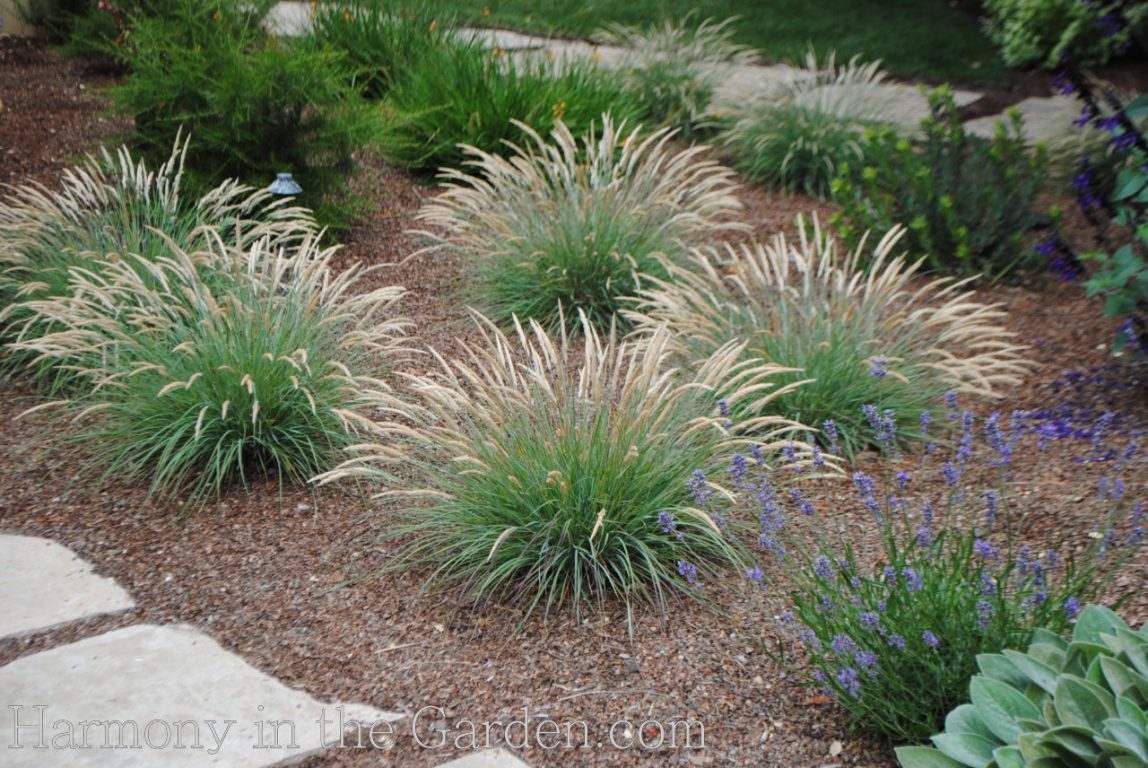

Some of the plants that have done particularly well are drifts of calamagrostis foliosa (photo on the left), salvia ‘Amistad,’ lavender ‘Hidcote,’ (photo on the right), stachys ‘Helen Von Stein’, and bulbine fruiticosa.
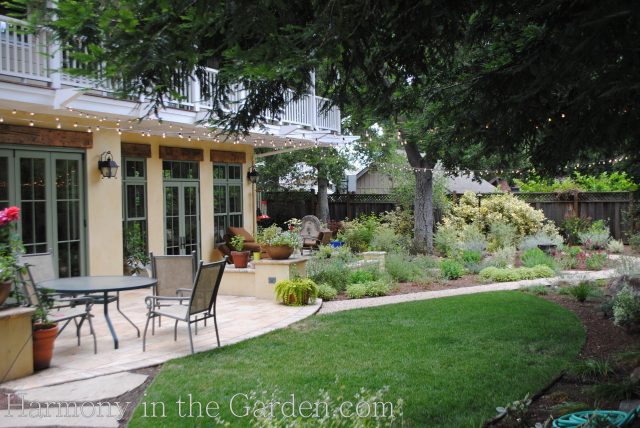
Meandering pebble pathways now wind throughout the new garden beds, under the twinkling lights strung above – just in time for their daughter’s wedding!
I hope you’ve all enjoyed this before-and-after!
And please stay tuned as next time I’ll be offering another exciting giveaway (hint: think garden tools!)
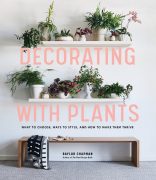




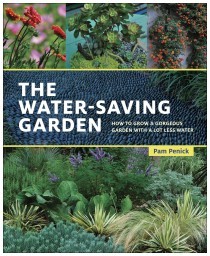
14 Comments
Happy New Year Rebecca!
What beautiful transformations! It is especially nice to see these photos now, in the dead of winter, showing the promise of spring and lushness ahead. It is encouraging to think little dormant plants will reach for the sun again before long. I am inspired to fertilize to encourage new and abundant growth.
Thank you for your talent and your blog! Come by next time you’re in my neighborhood.
Hello Katy! I think of you so often and it was so fun to put together this post highlighting your incredible home! I’d love to visit this spring when I’m down next. And yes, you should definitely think about spreading a little fertilizer/compost around your babies before another rain storm (to take advantage of the rain distributing the magic down to the roots!) I’ve been planting like mad here, taking advantage of the soft, damp soil (vs. the cement-like consistency it becomes once it dries out) Give my love to all! xoxo
LOVE seeing all the before and after shots. What you’ve created for your clients is beyond wonderful. It is beauty combined with practicality and with wise water conservation and perfect plant combinations. I enjoy looking closely at each photo and dwelling with all the possibilities you give us.
So glad you’re using bush poppy, one of my all time favorites.
Sending love to you and yours and happy 2020,
Sharon (and Jeff)
Hi Sharon (and how lovely to hear from you!) You would absolutely love these clients (and visa-versa) as well as their home and garden. Hmmm…how can I make this happen? Ah well. In the meantime, I’m glad you enjoyed the pics and please say hello to Jeff for me! Giving you both a big ‘ol 2020 hug.
Just Beautiful!
Thanks, Kathy! I hope to see you again next month at the show! 🙂
What a delight to see this retrospective! As always, you inspire my ideas from afar and admiration for the beautiful response you give to create magic. Happy New Year!
Thanks so much, Linda – and Happy New Year to you, too!
In the photos of plants, I wish you would name them. I don’t always know the botanical names, and have to look up each plant to find a corresponding photo.
Hi Pat – I’m still trying to figure out the ins and outs of this new blog format but will definitely keep this in mind. In the meantime, I’ve updated my post to include the varieties of plants – I hope that helps!
Wow, such stunning design! What a wonderful place to garden and just be in. One plant question – is the plant noted in your article as Carex foliosa instead Calamagrostis foliosa, Mendocino Leafy Reed Grass? I love mine as it is so trouble free and lovely when in full bloom.
Do you also design the irrigation systems in your gardens? For the guest house garden beds, is the system drip? If so, is it in-line or emmitters? I need to install a system and wonder what you think works best.
Thank you so much and Happy New Year!
Oh gosh, you’re so right re: the Calamagrostis, Ronnie -thanks for the heads up! As far as the drip system, I’m 99% sure we installed an in-line drip system. We’ve done Netafim in the past and clients either love it or hate it, so we most likely went with the tried-and-true 1/2″ tube with 1/4″ laser-cut inline. I wish I could remember, but for the life of me, I can’t! Netafim is costly and when there’s problems it can be hard to locate where the issue is. Though, it definitely reduces water consumption over the long run, as a plant’s roots spreads out in all directions when given ample water. Then, after a year or two, it’s easy to reduce the amount of time you need to water and because of such established, robust roots the plants can deal with drought much, much better. My clients tend to want in-line emitters so that’s what we install. I hope that helps a bit!
Thank you for the inspo – this southern California gardener is always happy to see plant selections that can work in our gardens. Happy New Year!
Thanks, Holly, I’m glad you’re enjoying my blog. Happy New Year!